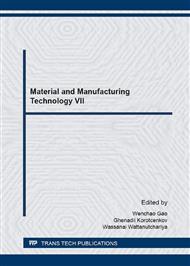p.118
p.123
p.128
p.133
p.138
p.147
p.152
p.157
p.162
Total and Partial Photon Interactions of BaSO4-Na2O-B2O3-SiO2
Abstract:
The radiation parameters of barite sodium silicoborate glass (BaSO4:Na2O:SiO2:B2O3) with different concentration of barite (BaSO4) were studied. The mass attenuation coefficient (μ/ρ), effective atomic number (Zeff) effective electron densities (Ne,eff) and half value layer (HVL) have been calculated by theoretical approach using WinXCom program in the energy range of 1 keV to 100 GeV. The results of these parameters are show graphically for total and partial photon interaction. It was found that the Zeff show discontinuous jumps related to absorption edges and dominance photoelectric effect at low energies, pair production have two types which are nuclear and electron field and its slightly increased with increasing photon energies. The variation of Ne,eff was related to the value of Zeff. The half value layer (HVL) of glasses were compared with commercial window and some standard shielding concretes which observed that the value of 20 mol% BaSO4 has lower than commercial window, ordinary and hematite-serpentine concretes. These results showed that glass sample is promising radiation shielding materials.
Info:
Periodical:
Pages:
138-144
Citation:
Online since:
September 2016
Keywords:
Price:
Сopyright:
© 2016 Trans Tech Publications Ltd. All Rights Reserved
Share:
Citation:


